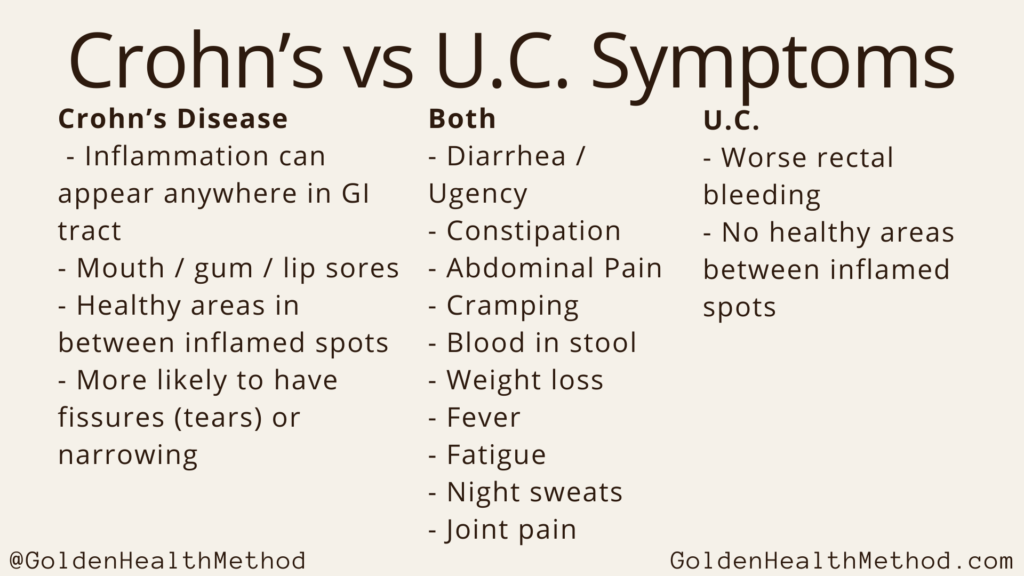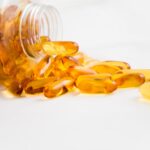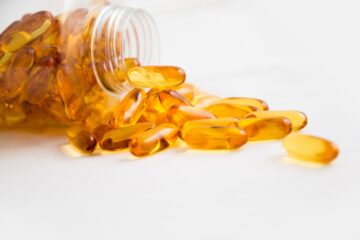After reading this article / video, you will understand the differences and similarities between the symptoms of Ulcerative Colitis and Crohn’s Disease.
Abdominal pain, cramping, bloating, mouth sores, joint pain, blood in the stool, and more can all be symptoms of inflammatory bowel disease (IBD). Ulcerative Colitis (U.C.) and Crohn’s are two different types of IBD.
However, the symptoms between U.C. and Crohn’s are slightly different, so we are going to clear up any confusion about the differences in this article.
Table of Contents
- Main Article:
Video:
Stream this Podcast episode:
Summary:
- Learn the similarities and differences between the symptoms of Ulcerative Colitis vs Crohn’s Disease.
- Learn how Crohn’s Disease affects more than just the colon.
- Learn about the correlation between U.C. and blood in the stool.
- And more!
Main Article:
In this article, we are going to be discussing some of the major differences as well as similarities between the symptoms of Ulcerative Colitis vs Crohn’s Disease.
If you haven’t read my previous article about the differences in Ulcerative Colitis and Crohn’s Disease, make sure you check that out here.
If you have recently been diagnosed with either Ulcerative Colitis or Crohn’s, or you are considering that you might be suffering from Inflammatory Bowel Disease (IBD), in which Ulcerative Colitis and Crohn’s are the top 2 “types” of IBD, then this article will help you know what the common symptoms are between the two different types of IBD.
By knowing this, you will be better able to determine if you or a loved one might be suffering from either of these two conditions.
BOTH: Symptoms of Ulcerative Colitis vs Crohn’s Disease
Let’s first go over which symptoms Ulcerative Colitis and Crohn’s Disease share.
Here are the most common symptoms:
- Diarrhea / Urgency (feeling like you need to use the bathroom very quickly)
- Constipation
- Abdominal pain
- Cramping
- Blood in stool
- Weight loss (due to reduced appetite and reduced ability to absorb nutrients)
- Fever
- Fatigue
- Night sweats
- Joint pain
Side Notes for Symptoms of Both Ulcerative Colitis and Crohn’s Disease
- While it can be hard to absorb nutrients in general, usually fats and oils are the most difficult to absorb for IBD. This is because, while carbs and proteins get absorbed high up in the small intestine, fats need to latch onto bile acids and get absorbed in the colon. If you have colon inflammation, this can make it harder to absorb fats.
- If you would like to learn how to consume the “right” fats in the most optimal way for U.C. and Crohn’s, according to research, make sure you check out my FREE mini-course “IBD: Get Your Fats Right“
- If you would like to learn how to consume the “right” fats in the most optimal way for U.C. and Crohn’s, according to research, make sure you check out my FREE mini-course “IBD: Get Your Fats Right“
- Fatigue is a very common symptom that comes with Ulcerative Colitis and Crohn’s Disease. Many people with IBD are unaware in the beginning how likely it is for them to feel very fatigued on a daily basis. I have another article that addresses fatigue for IBD here that you can check out to learn how to help lower the fatigue.
- In my master online course, “Ultimate Freedom From Crohn’s and Colitis“, I also cover how to significantly reduce IBD fatigue, among many other practical, evidence-based tips and suggestions.
- In my master online course, “Ultimate Freedom From Crohn’s and Colitis“, I also cover how to significantly reduce IBD fatigue, among many other practical, evidence-based tips and suggestions.
- The night sweats can be partially due to bacteria and inflammation, and it can also be due to the anxiety that tends to come with U.C. and Crohn’s.
- Joint pain can occur with both Crohn’s and U.C., however it is more common with Crohn’s. Both of these conditions tend to cause whole-body inflammation (which is picked up on blood tests as high CRP and ESR, among others). However, as we learned in the previous article, Crohn’s tends to be more of a “whole-body” condition, whereas Ulcerative Colitis usually stays localized to the colon.
- Keep in mind that you do not have to have all of these symptoms. These are just “potential symptoms” and are the most common ones.
Symptoms of Crohn’s Disease
Now let’s move over to symptoms that are particular to Crohn’s Disease.
Here are the most common ones:
- Inflammation can appear anywhere in the GI tract (from mouth to rectum)
- Mouth / Gum / Lip sores
- Healthy areas in between inflamed spots (“Skip lesions”)
- More likely to develop fissures (tears) or narrowings (strictures)
Side Notes for Symptoms of Crohn’s Disease
- Unlike U.C., Crohn’s disease is more likely to become a full gastrointestinal condition, where you can develop esophagus damage, small intestinal issues, and mouth sores.
- “Skip lesions” in the colon (healthy tissue separated by damaged tissue separated by healthy tissue) is one of the main “signature” findings for Crohn’s during a colonoscopy. U.C. tends to have more continuous damage of the colon.
- Fissures and strictures can be very problematic if they develop for Crohn’s. For example, a stricture (narrowing) occurs because of continuous damage and healing that leads to scar tissue build up. This can make it very difficult for food to pass through and can even lead to excessive vomiting and nausea.
Symptoms of Ulcerative Colitis
Lastly, let’s list the most common symptoms that are specific to Ulcerative Colitis:
- Worse rectal bleeding
- Symptoms are localized to just the colon / rectum
- No healthy areas between inflamed regions
- More formation of “ulcers”
Side Notes for Symptoms of Ulcerative Colitis
- Because of the formation of ulcers, Ulcerative Colitis tends to have worse rectal bleeding. This can mean running to the bathroom 10-20+ times per day due primarily to bleeding.
- A colonoscopy for U.C. should find more continuous colon damage (not skip lesions like in Crohn’s) and the damage should primarily be in the inner layer of the colon only (compared to all the layers in Crohn’s)
Conclusion: Symptoms of Ulcerative Colitis vs Crohn’s Disease

I hope this helps you with your ongoing IBD journey!
Now you know about some of the major differences as well as similarities for Ulcerative Colitis vs Crohn’s Disease.
In an upcoming article, I am going to go over the differences and similarities in symptoms for Ulcerative Colitis vs Crohn’s Disease, so stay tuned for that; and if you haven’t subscribed yet to get updates, scroll up and click the subscribe button under the video above!
FREE GIFT
One last thing: If you haven’t yet enrolled in my new FREE mini-course “IBD: Get Your Fats Right“, you definitely will want to, because…
In it, I show you exactly why the types of fats that you are consuming can have a major impact on your disease and symptom progression. Most people underestimate just how important of a role fats play in IBD / Crohn’s / Ulcerative Colitis. By “getting your fats right”, you’ll be setting yourself up for some great IBD success!
This is NOT your generic “eat good fats, avoid bad fats”.
There is critical information in this course that I promise you haven’t heard anywhere else.
And it’s free, so check it out now!
Warmly,
Dr. Sean
Related Posts
- Symptoms of Ulcerative Colitis vs Crohn’s Disease
- Ulcerative Colitis vs Crohn’s Disease: What You Need to Know (Plus One Treatment Tip!)
- Best Type of Fiber For IBD / Crohn’s / U.C. (Backed By Research)
- Is Fish Oil Good for Crohn’s / U.C. / IBD?
References:
- Andersen V, Olsen A, Carbonnel F, Tjønneland A, Vogel U. Diet and risk of inflammatory bowel disease. Dig Liver Dis. 2012 Mar;44(3):185-94. doi: 10.1016/j.dld.2011.10.001. Epub 2011 Nov 3. PMID: 22055893.
- Sun Y, Li L, Xie R, Wang B, Jiang K, Cao H. Stress Triggers Flare of Inflammatory Bowel Disease in Children and Adults. Front Pediatr. 2019;7:432. Published 2019 Oct 24. doi:10.3389/fped.2019.00432
- Gao X, Cao Q, Cheng Y, Zhao D, Wang Z, Yang H, Wu Q, You L, Wang Y, Lin Y, Li X, Wang Y, Bian JS, Sun D, Kong L, Birnbaumer L, Yang Y. Chronic stress promotes colitis by disturbing the gut microbiota and triggering immune system response. Proc Natl Acad Sci U S A. 2018 Mar 27;115(13):E2960-E2969. doi: 10.1073/pnas.1720696115. Epub 2018 Mar 12. Erratum in: Proc Natl Acad Sci U S A. 2018 Apr 30;: PMID: 29531080; PMCID: PMC5879702.
- Pedros C, Duguet F, Saoudi A, Chabod M. Disrupted regulatory T cell homeostasis in inflammatory bowel diseases. World J Gastroenterol. 2016;22(3):974-995. doi:10.3748/wjg.v22.i3.974
- Yamada A, Arakaki R, Saito M, Tsunematsu T, Kudo Y, Ishimaru N. Role of regulatory T cell in the pathogenesis of inflammatory bowel disease. World J Gastroenterol. 2016;22(7):2195-2205. doi:10.3748/wjg.v22.i7.2195
- Okayasu M, Ogata H, Yoshiyama Y. Use of corticosteroids for remission induction therapy in patients with new-onset ulcerative colitis in real-world settings. J Mark Access Health Policy. 2019;7(1):1565889. Published 2019 Jan 22. doi:10.1080/20016689.2019.1565889
- Rutgeerts PJ. Review article: the limitations of corticosteroid therapy in Crohn’s disease. Aliment Pharmacol Ther. 2001 Oct;15(10):1515-25. doi: 10.1046/j.1365-2036.2001.01060.x. PMID: 11563990.







1 Comment
dinosaur-game · April 2, 2025 at 11:43 pm
Revolutionary insight! Dino Game has become a global phenomenon in digital entertainment.